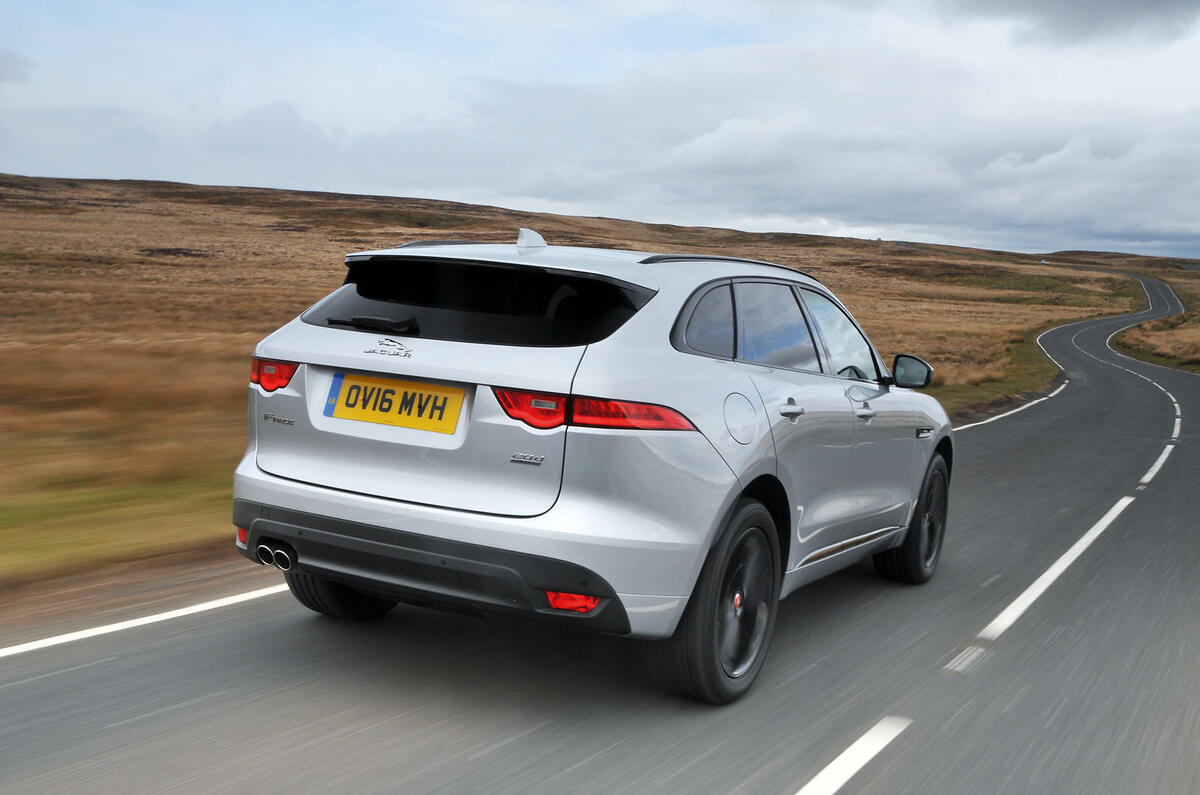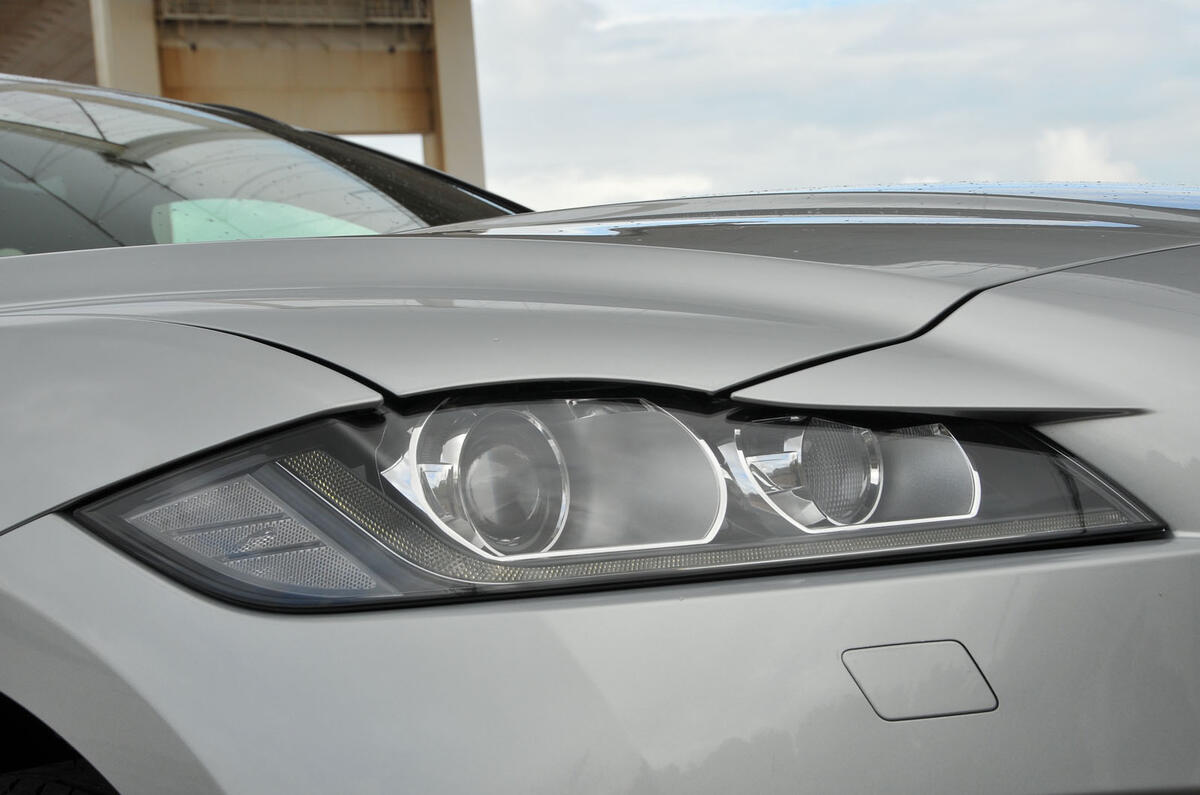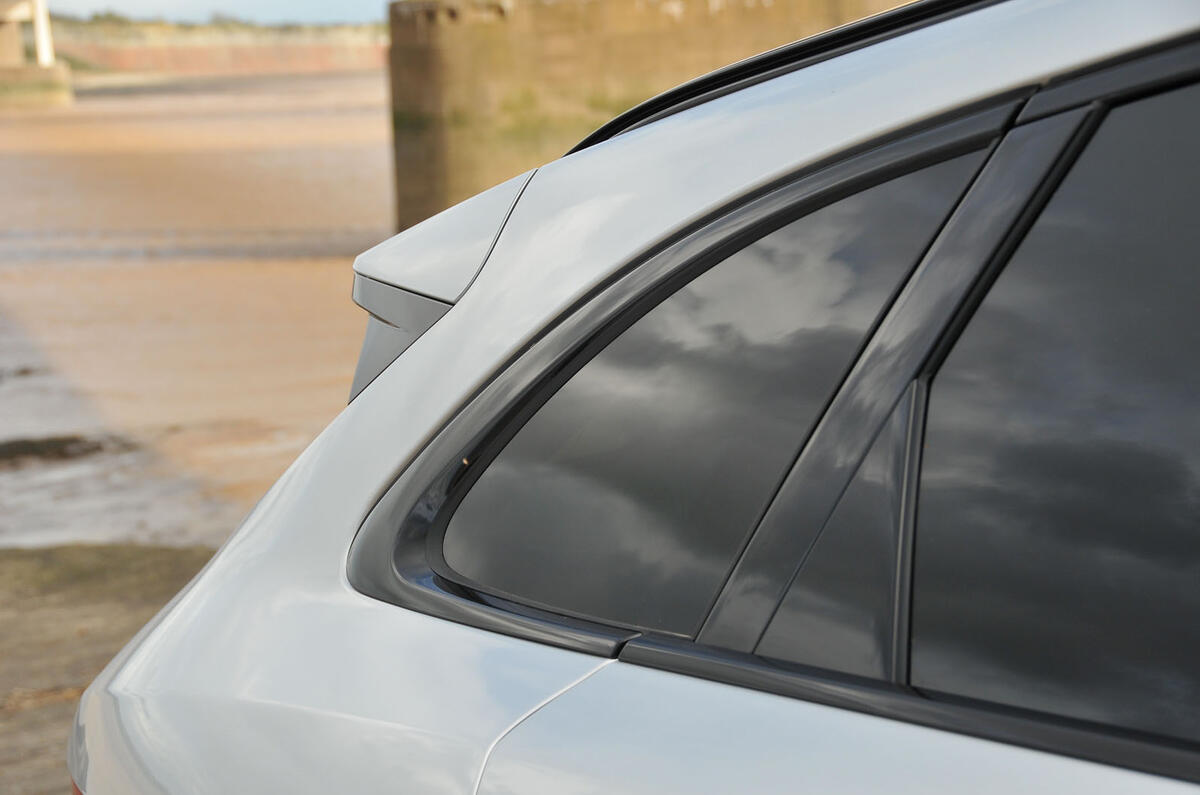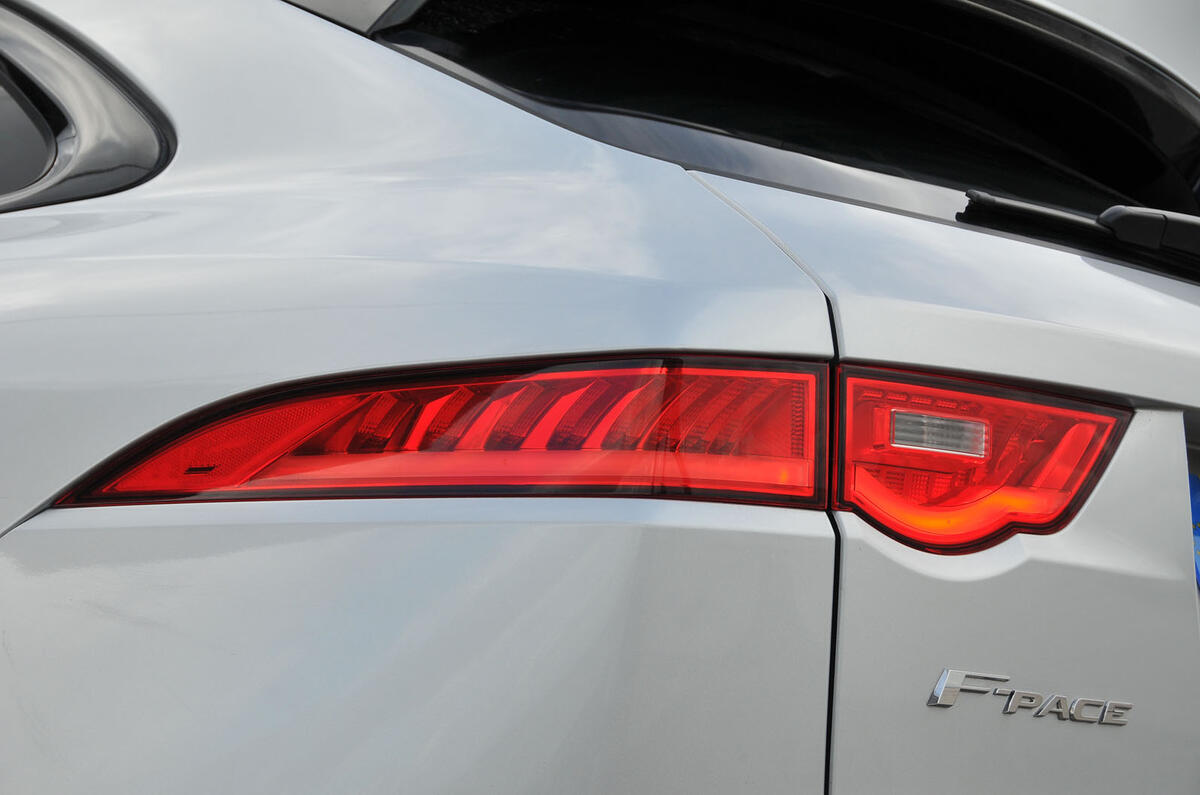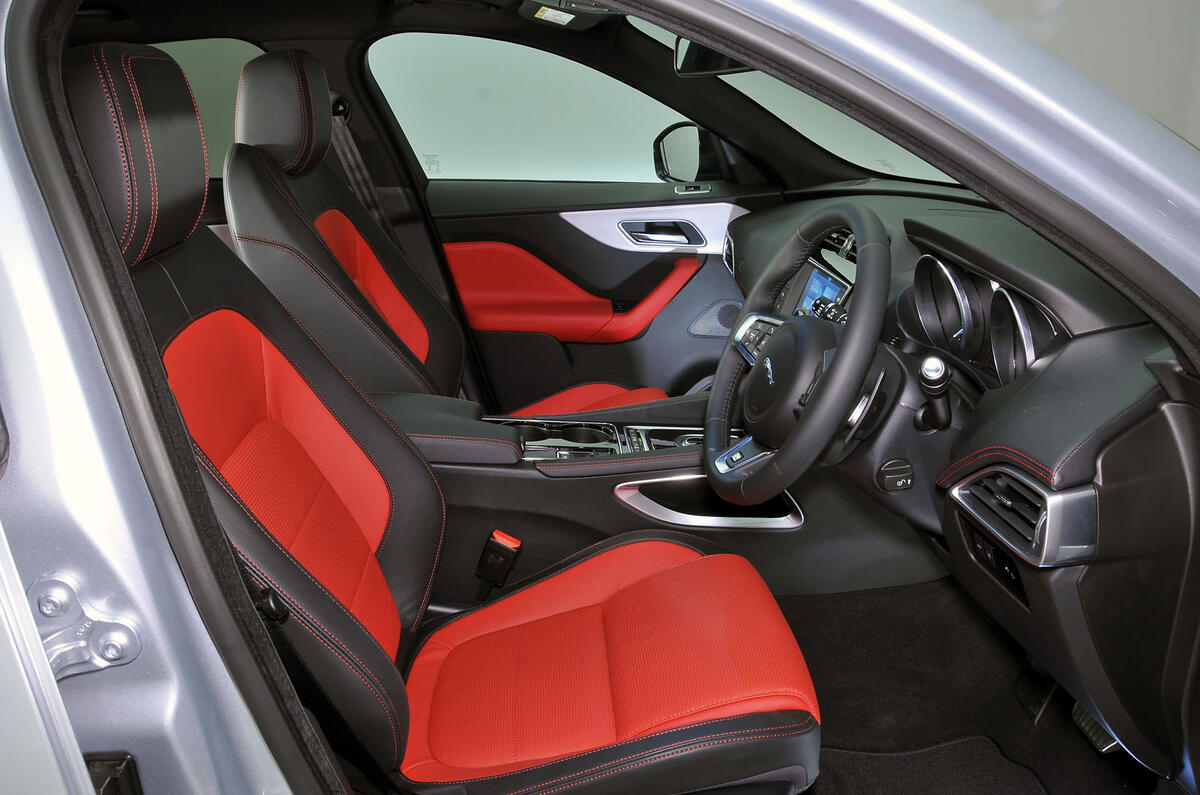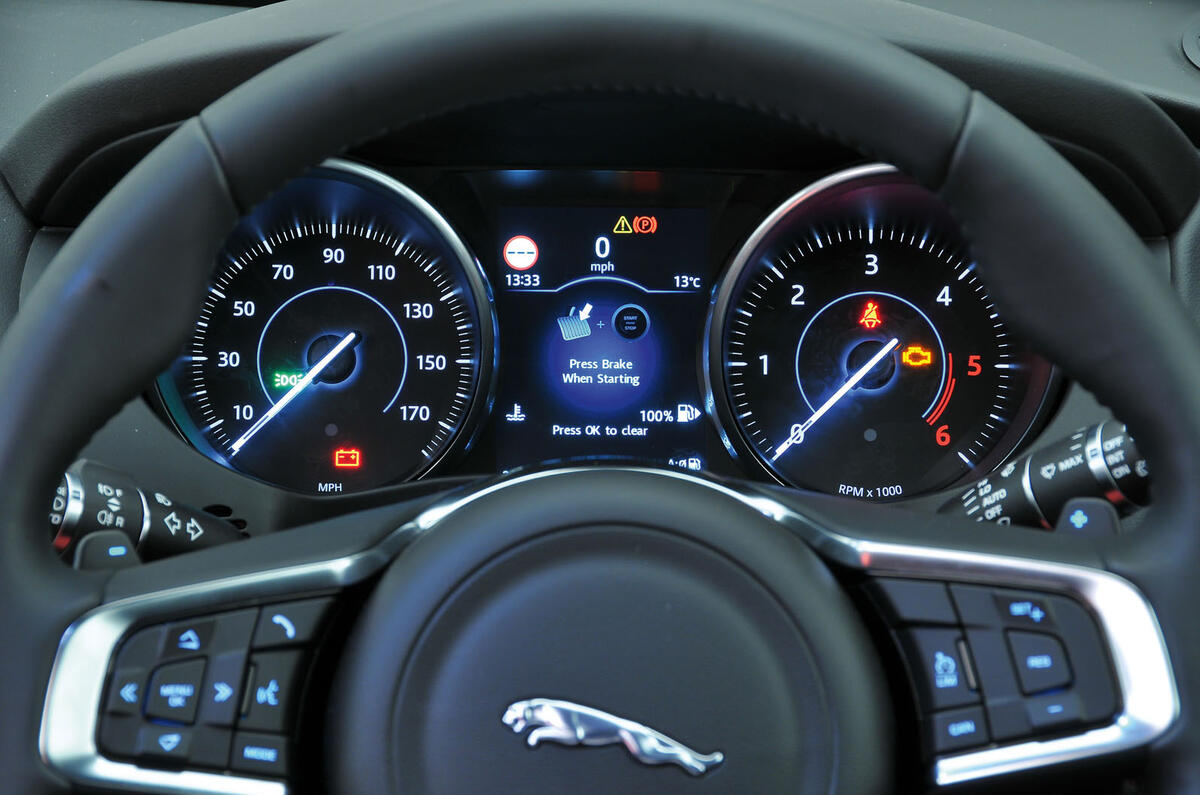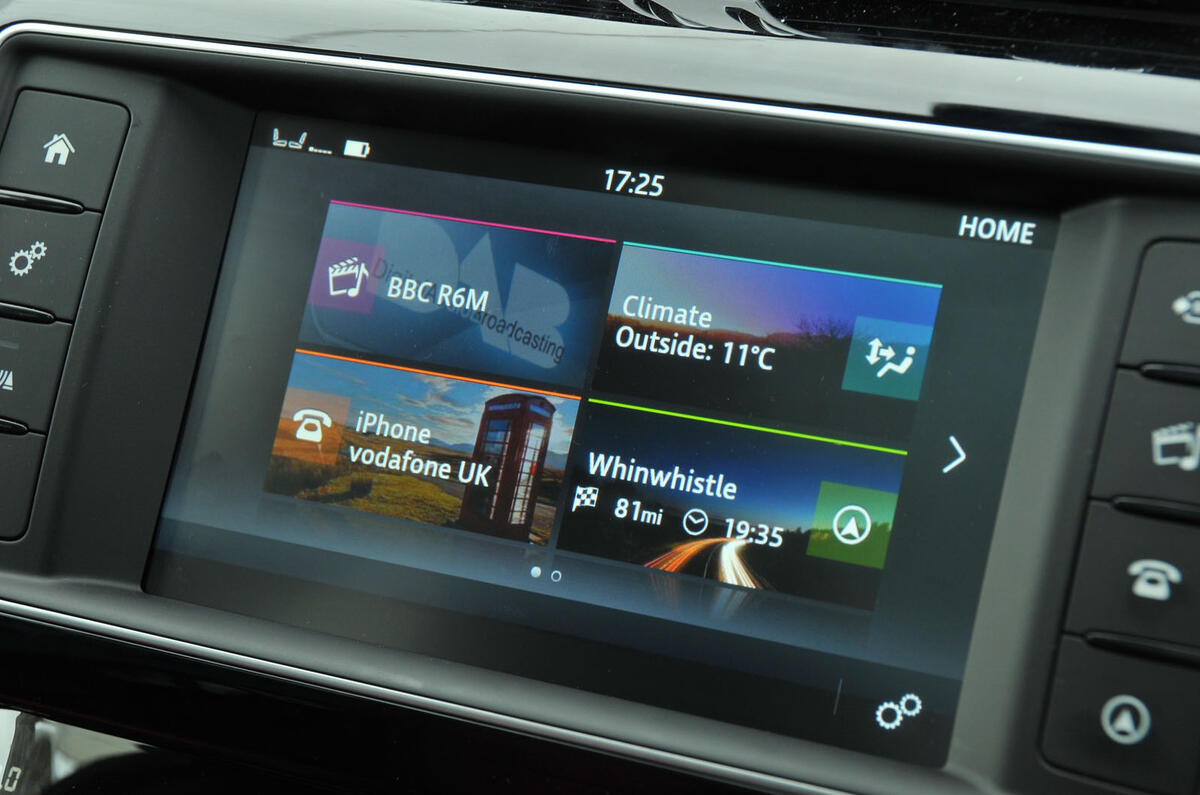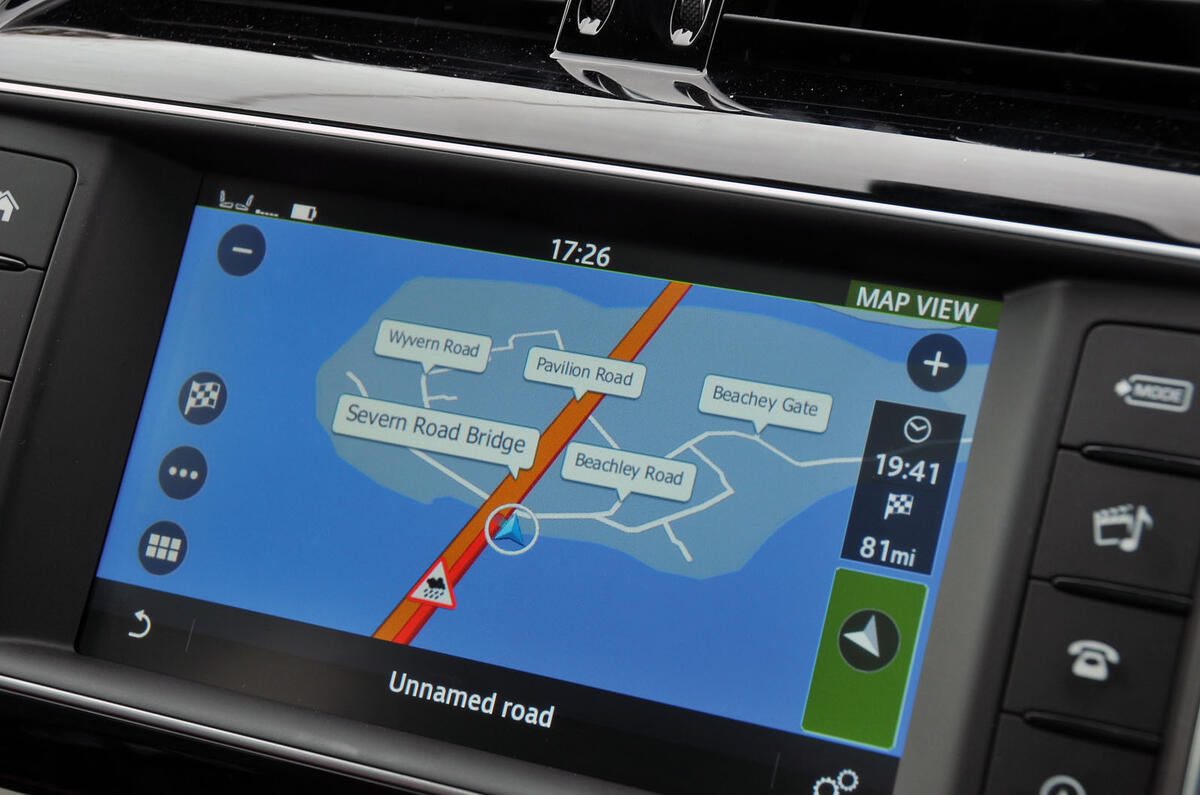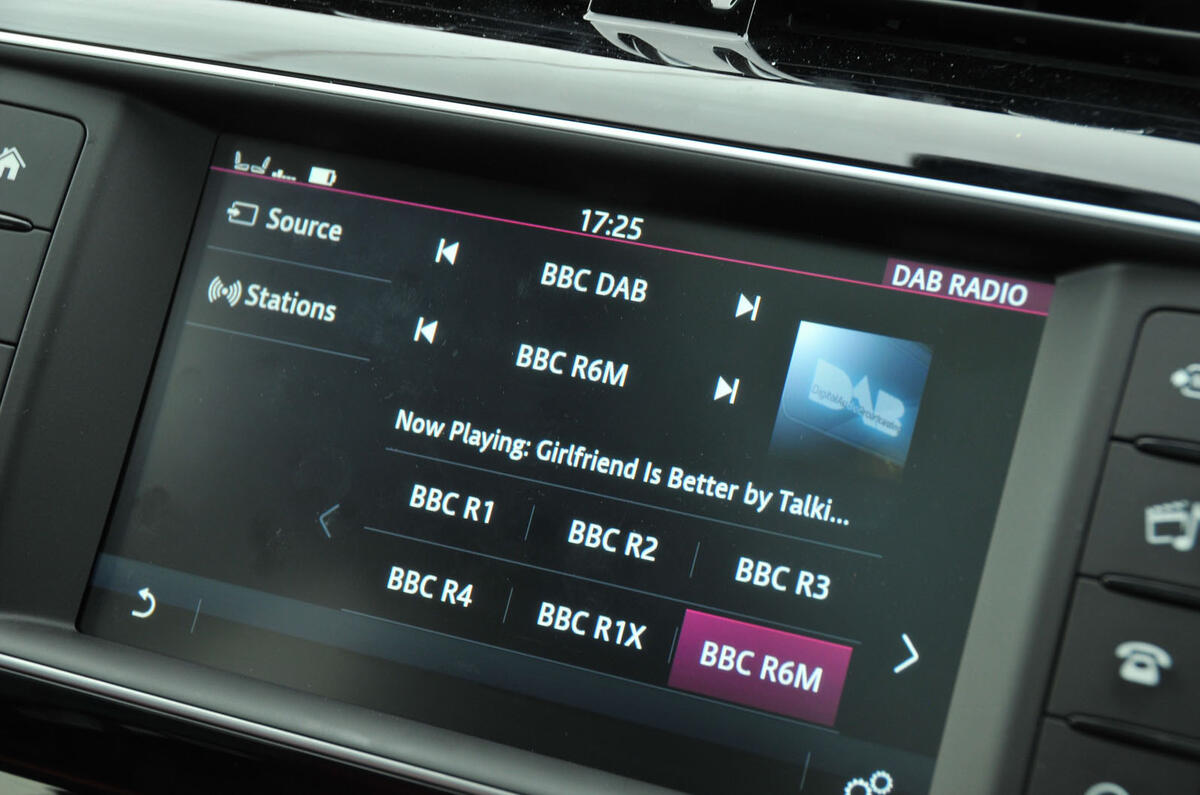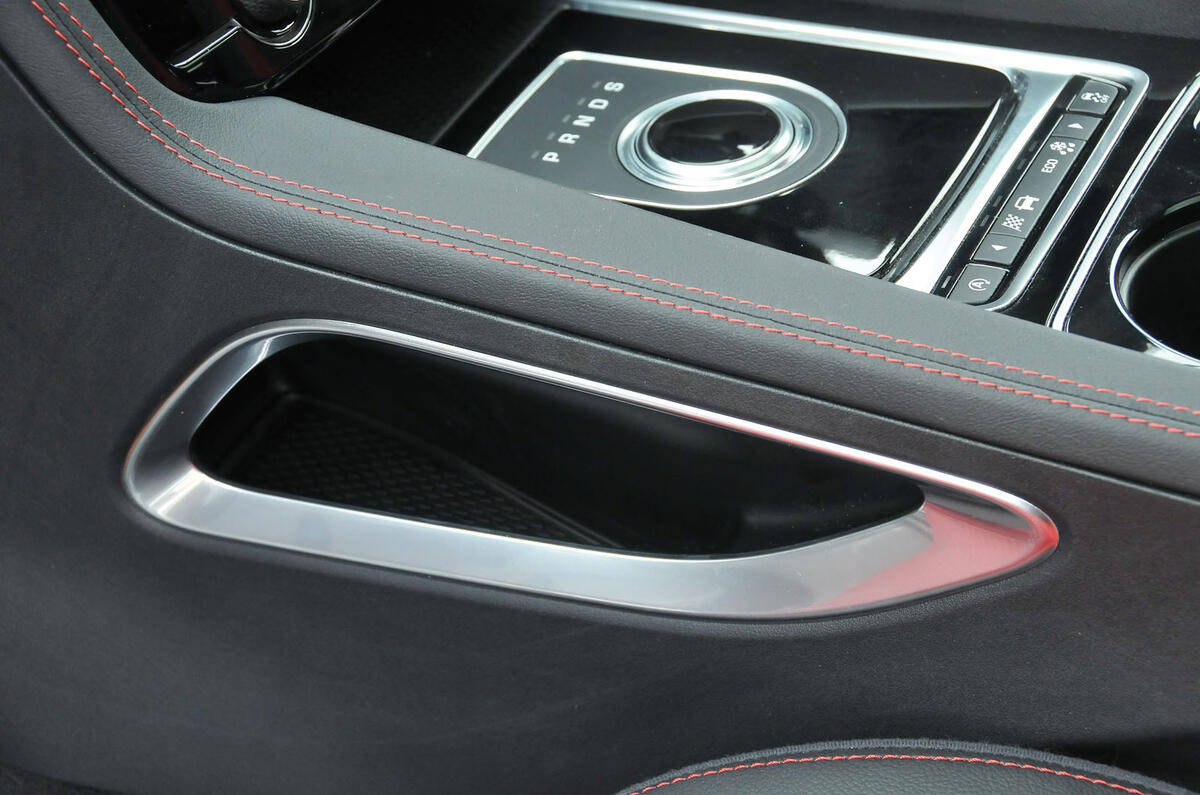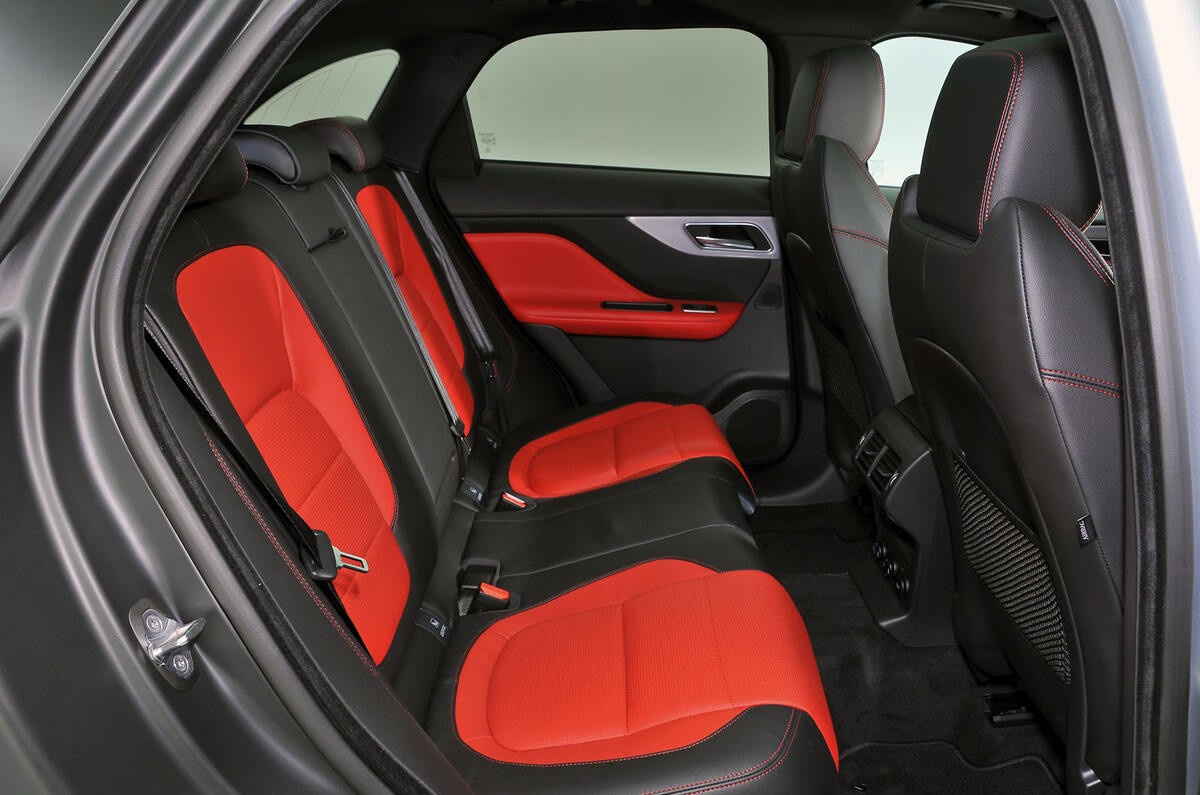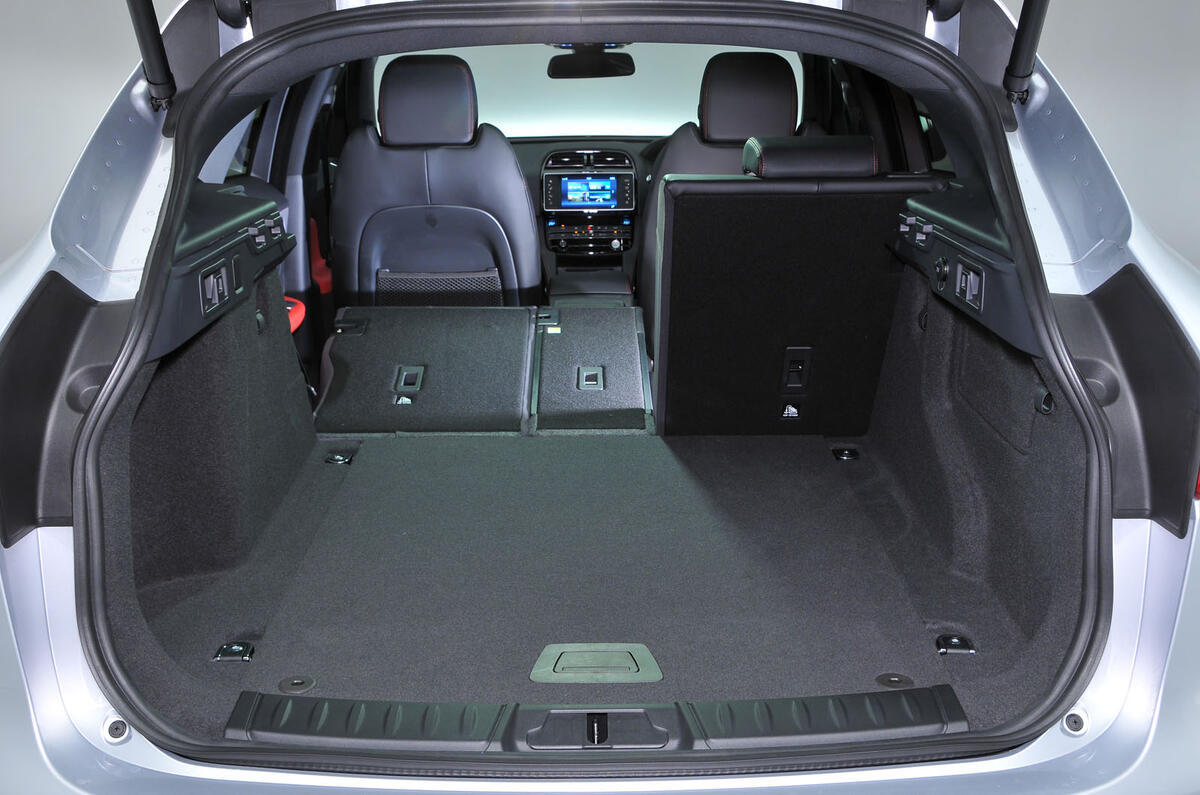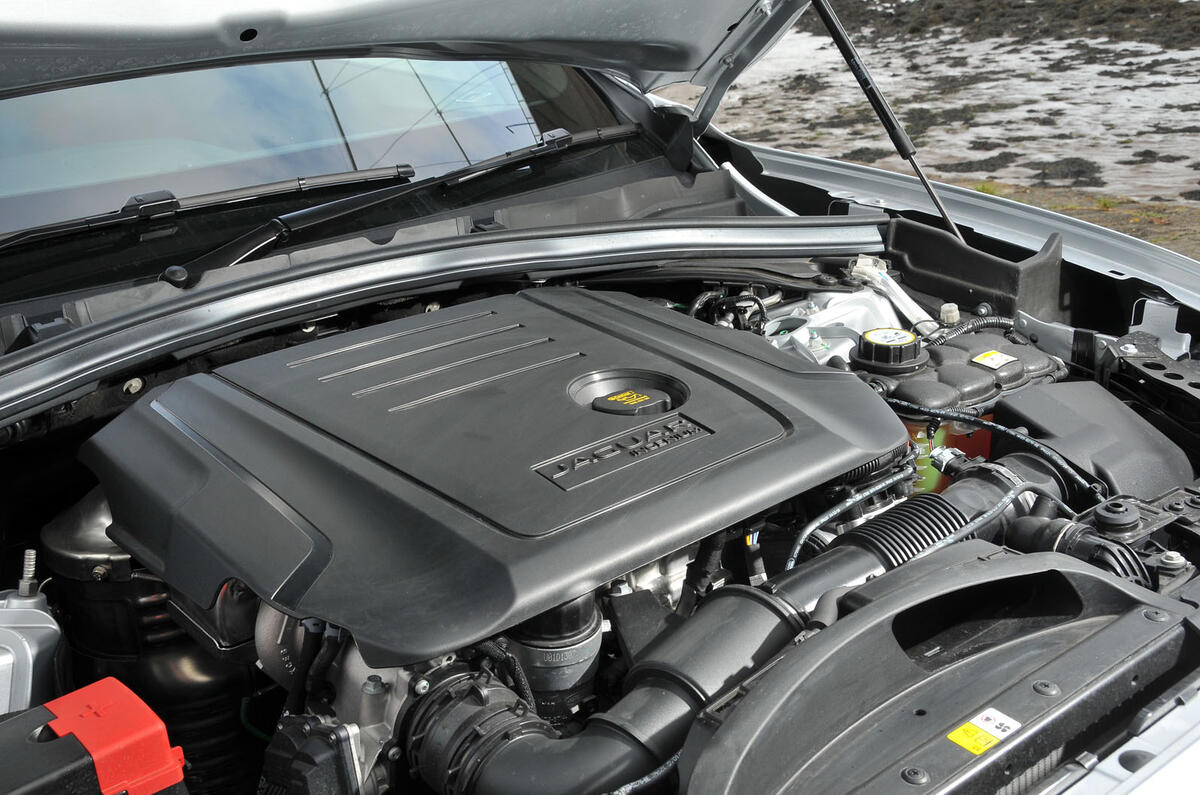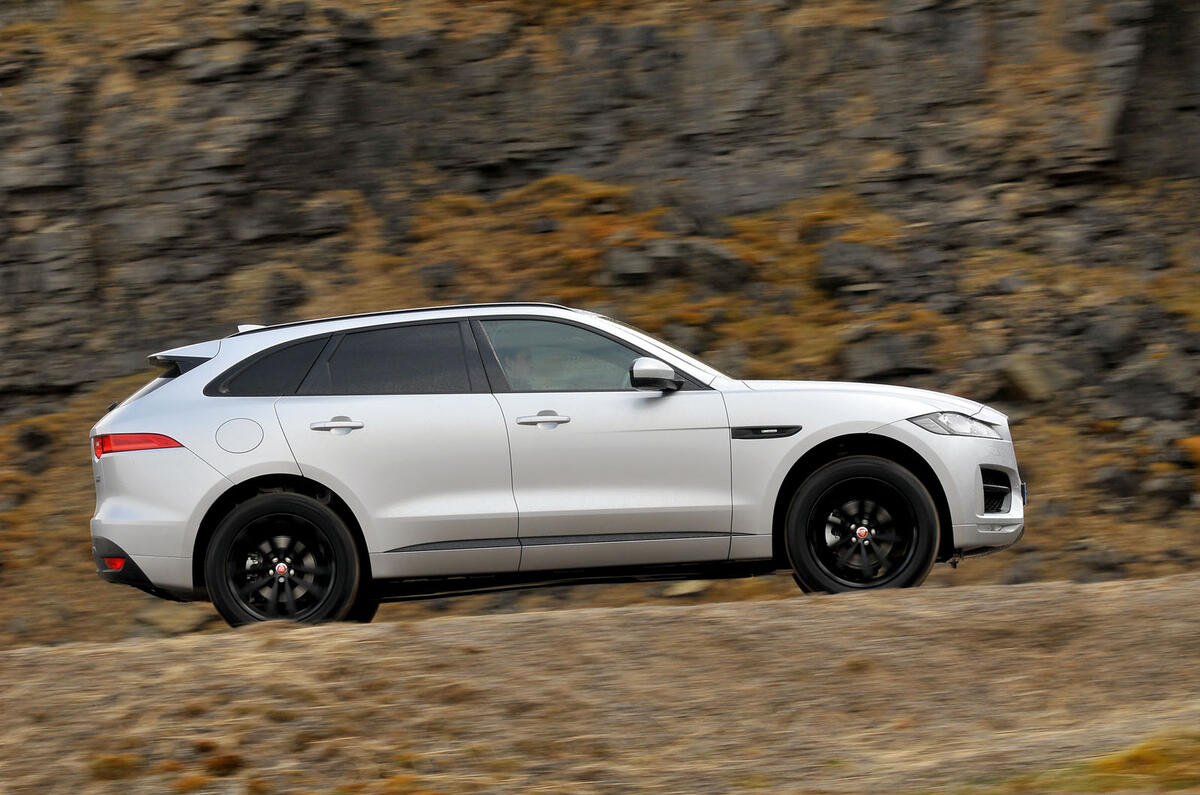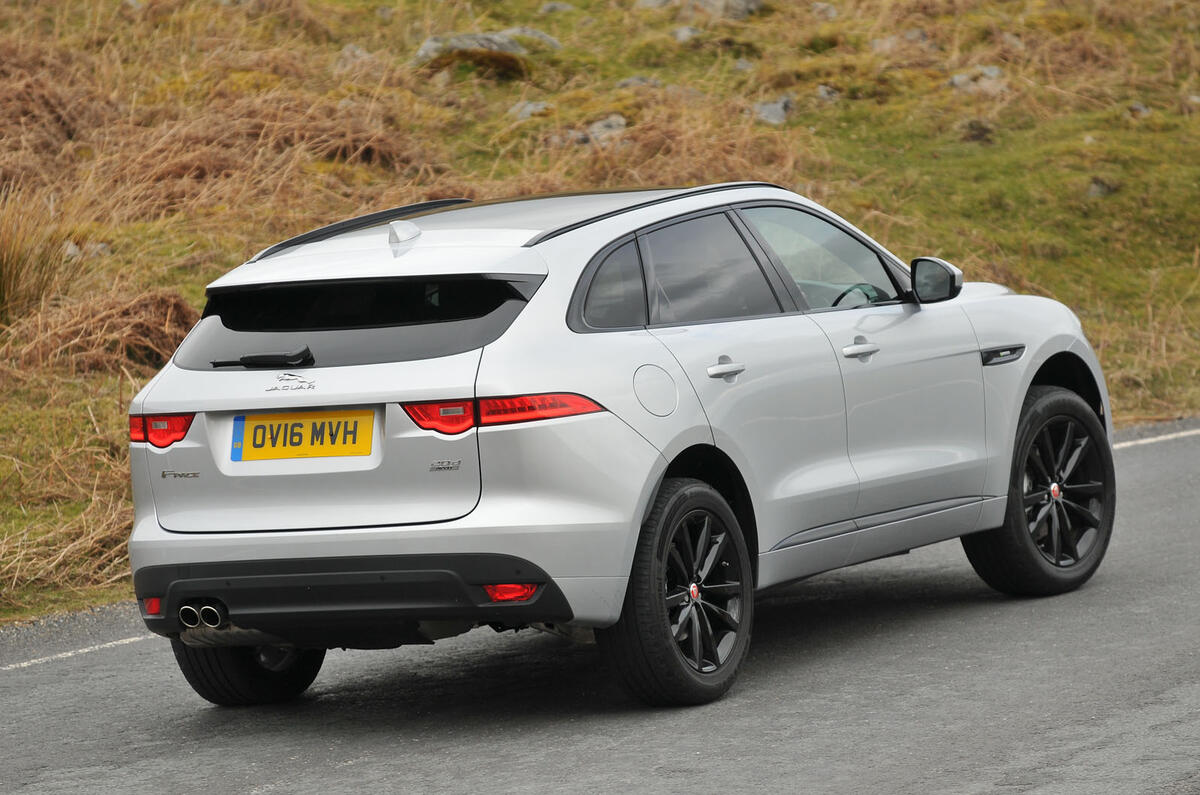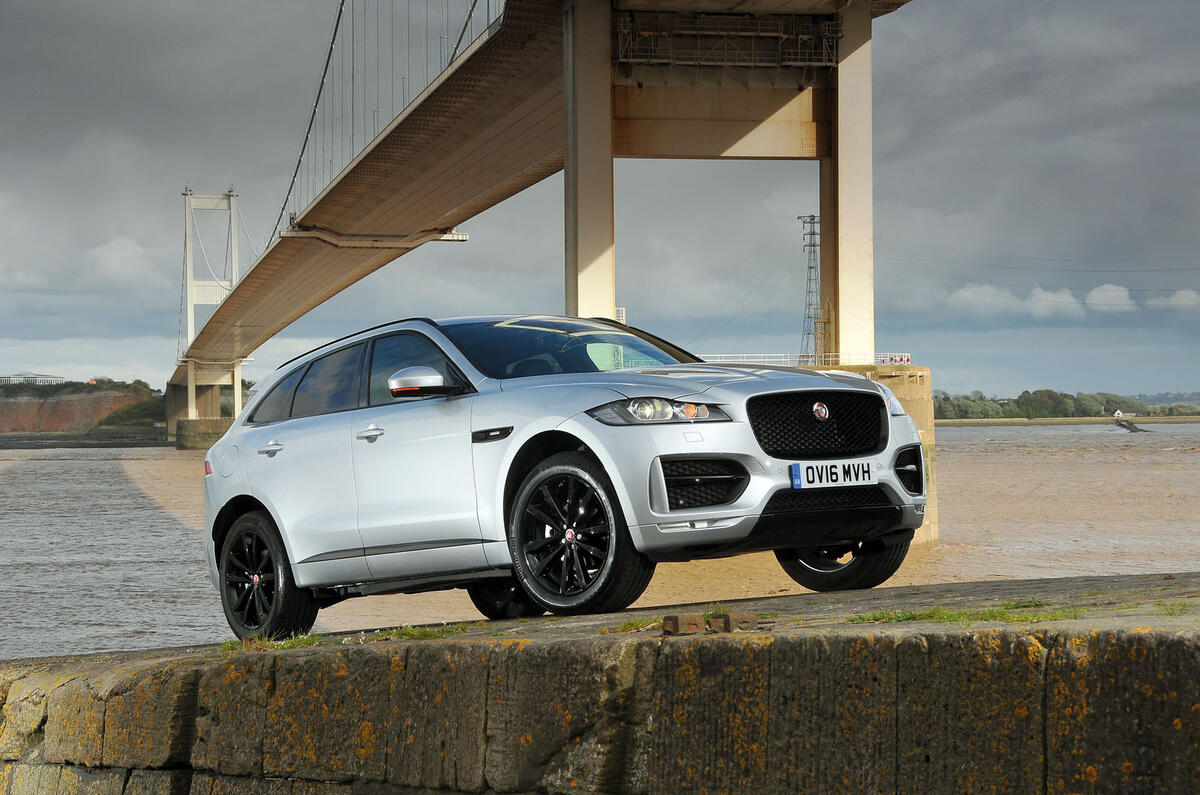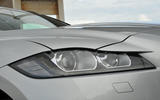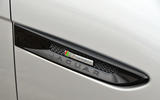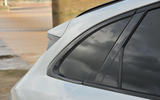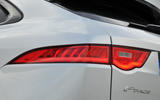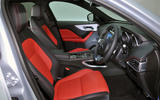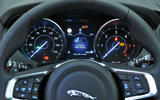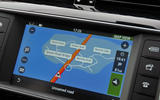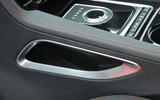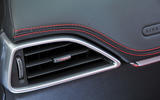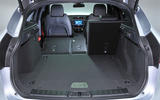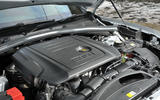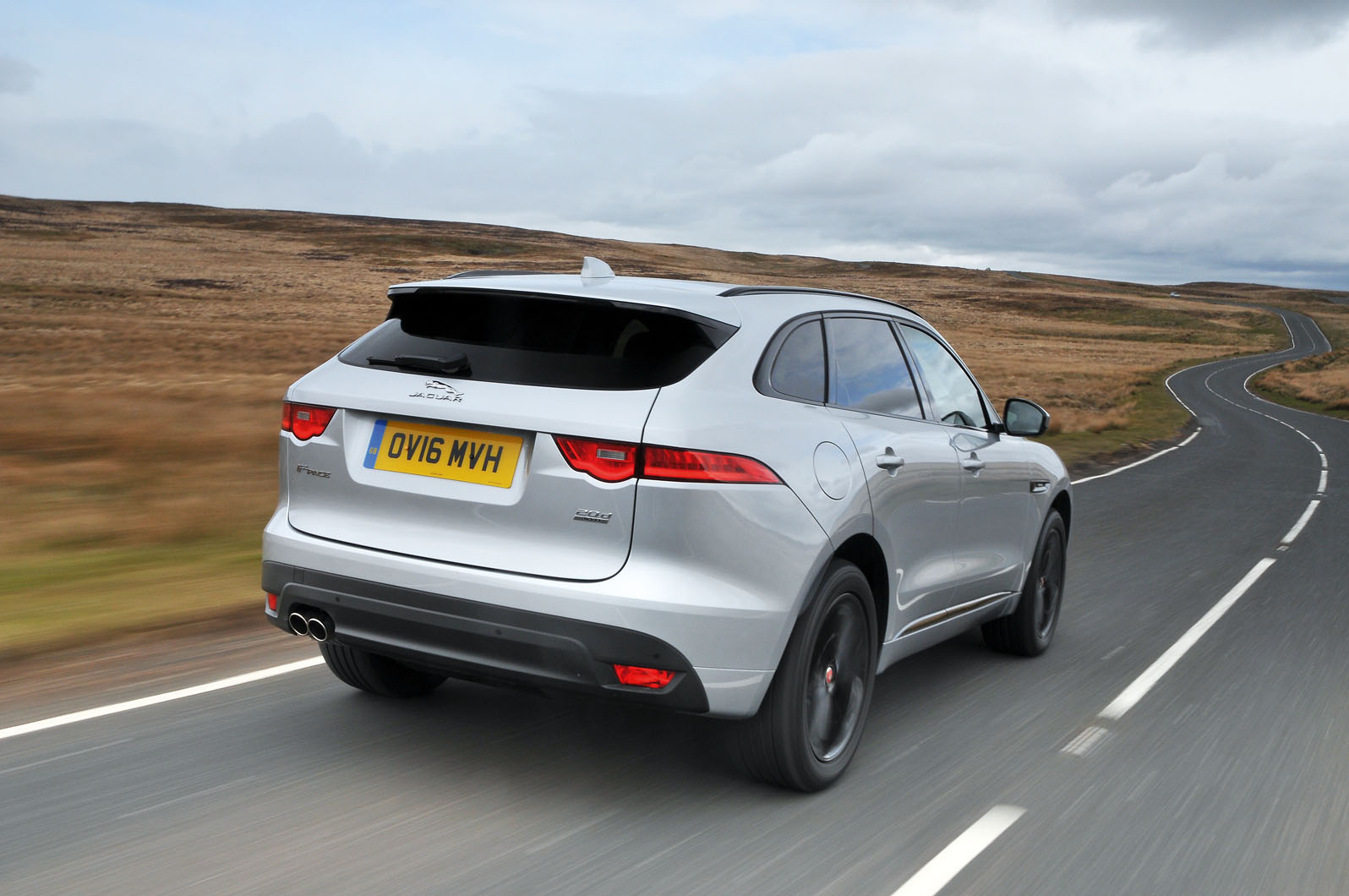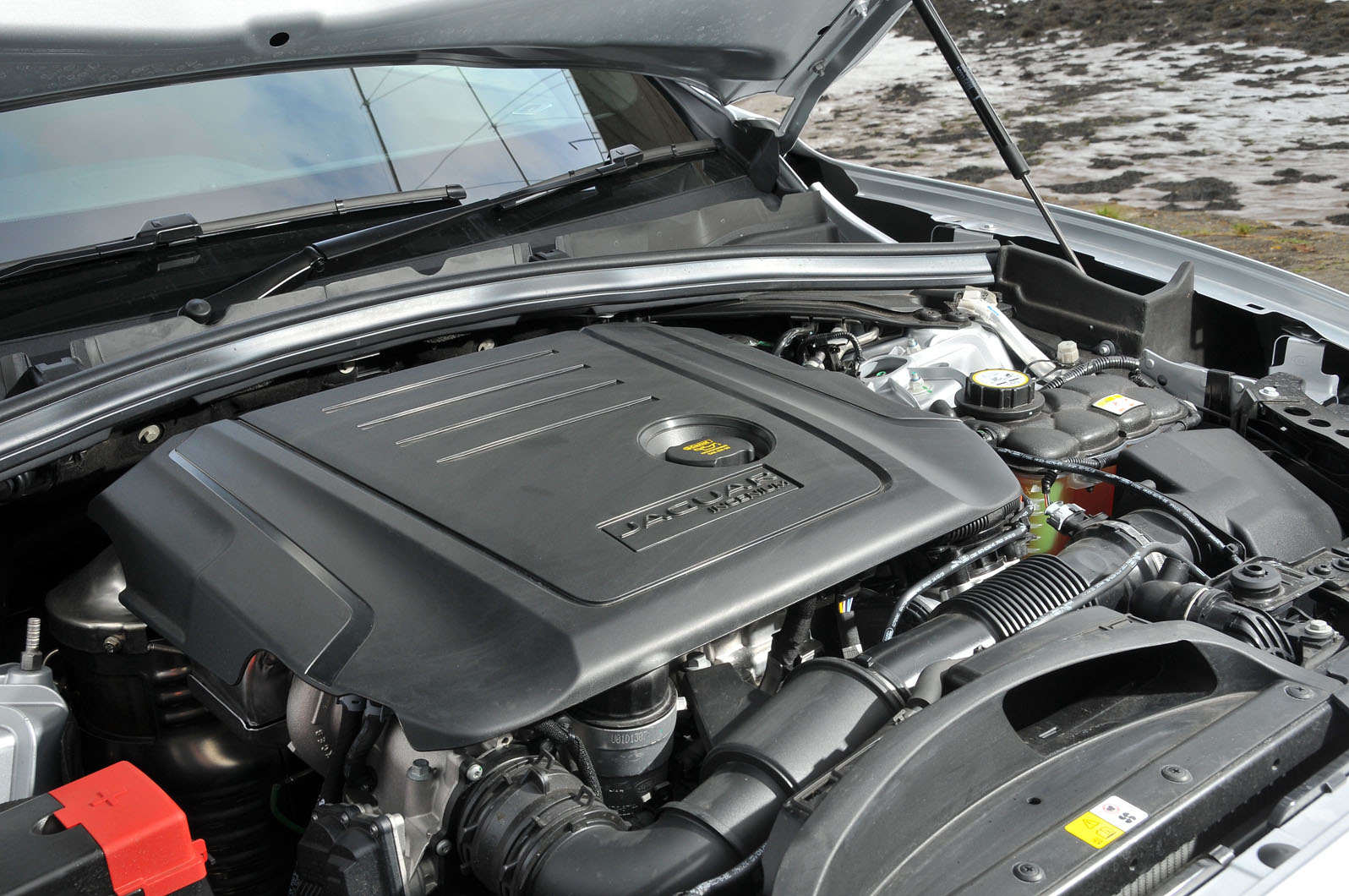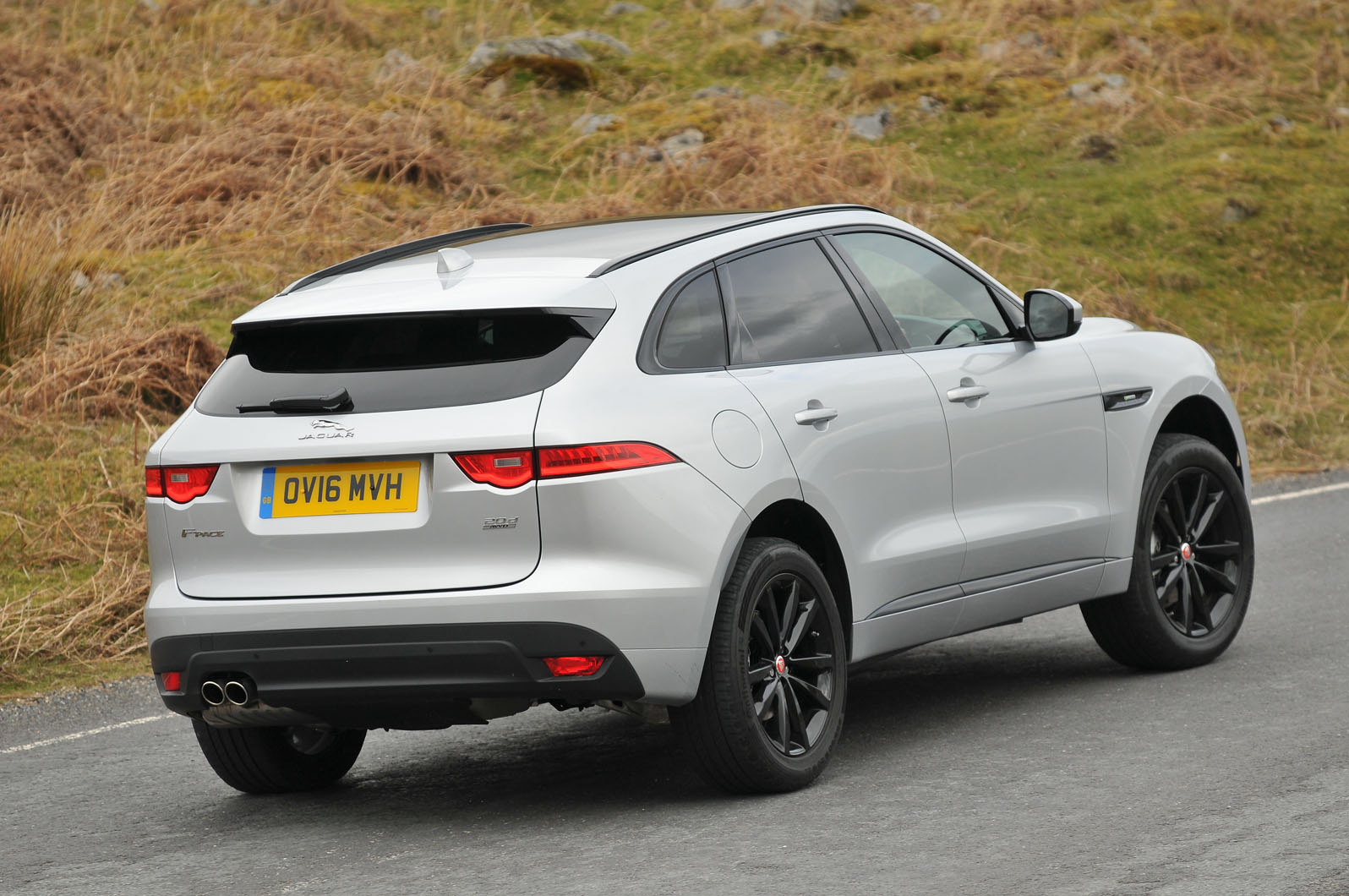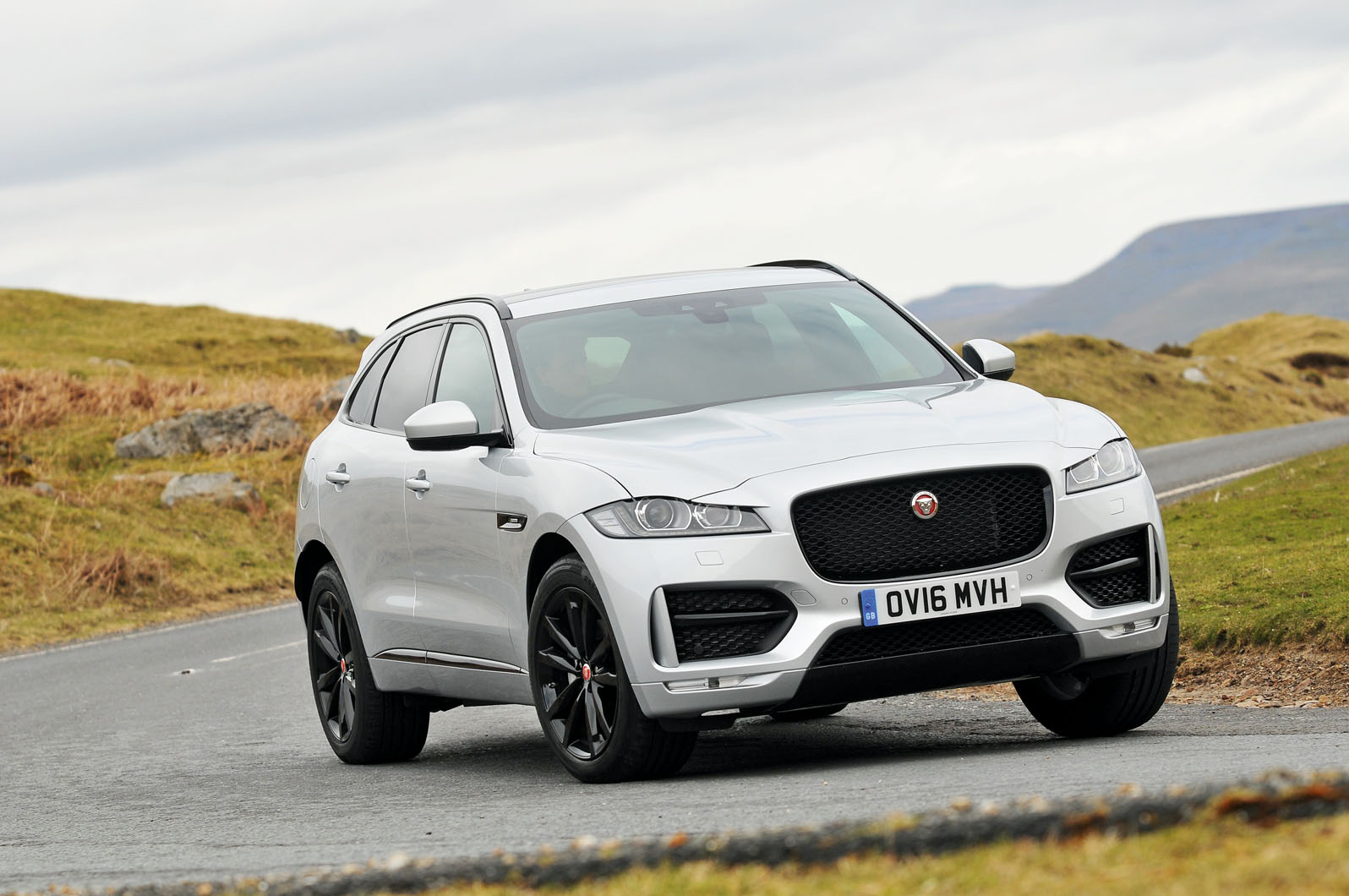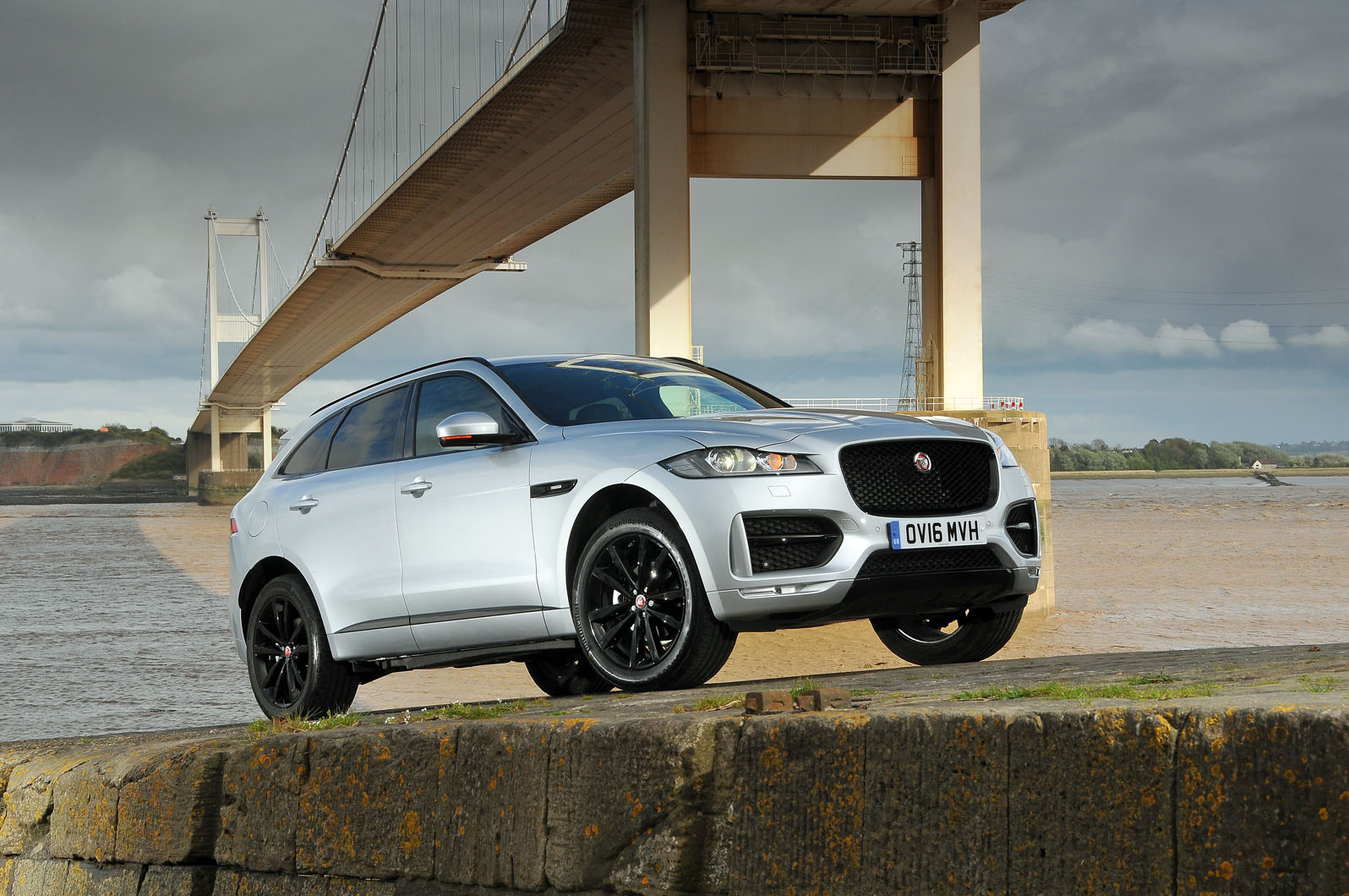Would a Jaguar still feel like a Jaguar if you sat in it bent-legged and meerkat-like at the wheel – as many SUV drivers are used to doing? For now, the question remains unanswered, because the F-Pace’s driving position is entirely unlike that.
Although the car’s hip point is quite high, you board it very conveniently rather than dropping down into the seat and your view out is good.
But you sit with arms and legs outstretched, surrounded by high-rising door cards and fascia, a relatively high transmission tunnel console, slanting A-pillars and a fairly slim glasshouse. So the F-Pace doesn’t seem like an SUV at all.
Neither has Jaguar strayed very far from its established conventions with the interior design. The sweeping arc of the dashboard and the swooping, free-form shapes of its features will be familiar to anyone transferring from an Jaguar XE or an Jaguar XF.
Everything looks and feels appealing enough. Material quality is good rather than outstanding, just as we found with the XE and XF. Fit and finish standards are likewise, with some trim pieces feeling just a little bit wobbly when subjected to scrutiny.
You get useful convenience features: big door bins, a sizeable centre cubby, good-sized twin cupholders and upright storage cubbies in the sides of the centre console that are designed especially to take your smartphone.
The farther rearwards your attention turns, the more the car resembles a conventional SUV in terms of space and versatility. The rear seats are wide enough for three smallish occupants and comfortable for two large adults, and there’s more leg room than in a Mercedes-Benz GLC.
At the back you’ll find seatbacks that fold 40/20/40 for maximum through-loading flexibility, a storage bay that’s wide and deep, a reversible floor with a wipe-clean, non-slip coating on the flip side, and space under the floor to stow the load bay cover when you need to take it out.
Although the Jaguar’s cabin can’t match the integrity and material largesse of some German rivals, it’s certainly the most versatile and well thought out of any of its cars.
There are four trim levels split into two catergories - Luxury and Sport. Luxury-trimmed Prestige models come with 18in alloy wheels, satin chrome roof rails, chrome exterior detailings, a powered tailgate, a leather upholstery and ambient interior lighting as standard. Opting for the Portfolio trim adds 19in alloy wheels, a panoramic roof, xenon headlights, auto-dimming and power-folding wing mirrors, Windsor leather upholstery, 10-way electrically adjustable front seats, keyless entry, a rear-view camera and a 380W Meridian sound system.
R-Sport trim heads up the Sport range, kitting the F-Pace out in 19in alloys, a sporty bodykit, satin black exterior details, gloss black roof rails, xenon headlights, sports seats and satin chrome paddle shifters. The range-topping S model, which is only available with the 3.0-litre V6 engine, gets 20in alloy wheels, adaptive suspension, bigger front brake discs, red brake calipers, heated front screen and washer jets, 10-way electrically adjustable seats, keyless entry, rear view camera and a 380W Meridian sound system.
Dominating the centre of the dashboard is Jaguar's InControl infotainment system, which comes with an 8.0in touchscreen display surrounded by traditional physical shortcut keys, DAB radio, sat nav, USB and Bluetooth connectivity, smartphone integration and a wi-fi hotspot. Upgrade to the InControl Pro system and you'll get a 10.2in touchscreen system complete with a more advanced sat nav system, a Meridian sound system, 10GB of on-board storage, various Jaguar online services and a customisable 12.3in digital instrument cluster.
However, this system is an optional extra and will set you back £1780 on Prestige and R-Sport trimmed F-Paces, or £1250 on Portfolio and S models. Our road test car didn’t have it but instead used the standard 8.0in touchscreen system — and it felt all the poorer for the omission. The screen is slow to react to fingertip prompts and renders navigation mapping with the graphical sophistication of an aftermarket system.
The Bluetooth phone connection is reliable enough and call audio quality decent. Audio quality from the standard-fit 80-watt audio system, meanwhile, isn’t much to write home about.
The upgraded Meridian hi-fi systems start at £600 and probably improves on the standard audio system’s range and clarity by more than enough to justify that outlay.



